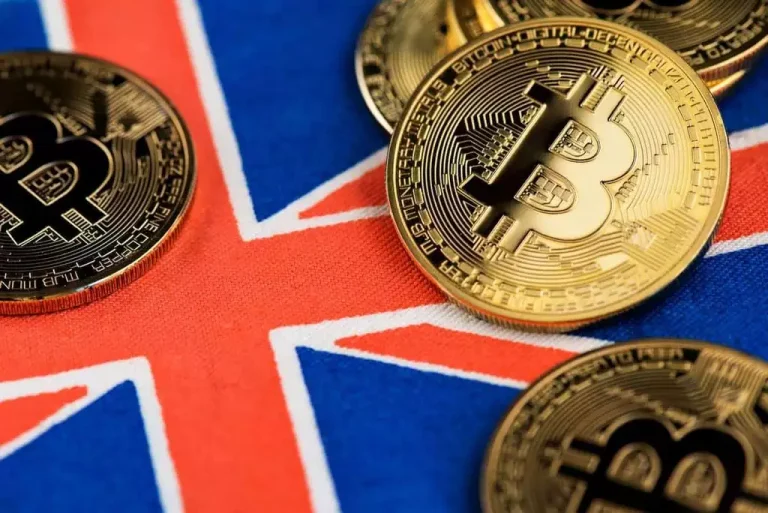There was a need for a system to account for the varying values of national currencies among international traders. Initially, derivatives were used to establish stable exchange rates for globally traded items. International traders have to have a mechanism in place to compensate for the varying values of national currencies. Crypto derivatives trading is a great option for both beginner crypto investors and seasoned ones. You can go with various options, depending on the level of risk you’re comfortable with. One trick that seasoned traders employ is borrowing assets and selling the same to someone else.
Futures and options are two common types of derivatives, and perpetual futures are a special type of futures contract unique to crypto markets. Though we are still in the early stages of derivative DEX development, several approaches are used to facilitate the decentralized trading of options and perps via smart contracts. We anticipate the end-game for decentralized derivatives is likely to converge back towards the CLOBs of traditional finance. AMM/vAMM-type approaches constantly decay LP value as they are arbitraged against the leading centralized venues for price discovery (e.g., Binance). Given Ethereum’s Layer 1 throughput constraints, we expect future developments are most likely to occur on general-purpose Layer 2s (e.g., Arbitrum, Optimism, Starknet, etc.) or bespoke app-specific environments.
- A call option gives its owner the right to purchase bitcoin at an agreed price once the contract expires.
- In exchange for receiving a floating interest rate or the actual price of a cryptocurrency, one party commits to paying the other party a fixed rate of interest on a specific date.
- In today’s financial and crypto markets, physical delivery of the asset does not always occur with futures contracts.
- Both call and put options can also be further categorized based on their exercise style.
- For the purposes of crypto, liquidity most often refers to financial liquidity and market liquidity.
Join millions, easily discover and understand cryptocurrencies, price charts, top crypto exchanges & wallets in one place. A derivative is a financial tool that is very commonly used among investors for preventing different risks. A Bitcoin derivative, on the other hand, can allow people to trade contracts that follow the price of Bitcoin without ever having to actually own any Bitcoin. We have previously written about spot exchanges in crypto, DeFi exchanges in crypto and today we will cover derivative exchanges. Please make sure that you’ve read our disclaimer on investment-related topics before proceeding.
What Are Crypto Derivatives and How Do They Work?
Making informed decisions in the crypto derivatives market involves research. Before you go ahead, make sure to read about the intricacies of crypto trading and how to segregate your assets, should you wish to partake. For example, in a bull market, traders may use option contracts to buy at a certain price (a “call” option), allowing them to benefit from further upward price movements. Similarly, in a bear market, traders may use options contracts to sell at a certain price (a “put” option), providing a hedge against further price drops.
After a month, the buyer will profit if the crypto price increases and is higher than the agreed price. If the crypto price goes down instead and stays below the agreed price, the seller will make a profit. Finally, derivatives are usually leveraged instruments, and using leverage cuts both ways. While it can increase the rate of return, it also makes losses mount more quickly. It is essential to remember that when companies hedge, they are not engaging in commodity price speculation. Each party’s profit or margin is incorporated into the price, and the hedge helps to protect those profits from price fluctuations in the commodity market.

For example, in Mesopotamia, clay tablets described futures contracts used for agricultural goods. More so, the risks involved in trading derivatives are usually higher than what is a derivative exchange those in the spot market. Due to their numerous opportunities, crypto derivatives have gained popularity in recent years among individual and institutional traders.
The option holder can also decide not to exercise at all, even when the expiry date occurs; in which case, the option expires, and the holder just loses the premium paid. Liquid markets come with high supply and demand for assets, making them more accessible for buyers and sellers. “Call” and “put” are to Bitcoin options as “going long” and “going short” are to futures. A call option gives the right to purchase Bitcoin at an agreed price upon contract expiry.
Increasing liquidity
What distinguishes futures contracts from other crypto derivative instruments is the specific settlement date. There is a special option called a knock-out with a predetermined floor and ceiling https://www.xcritical.com/ level (also known as the barrier price). The option contracts automatically terminate (get ‘knocked out’ and cease to exist) if the underlying asset’s price touches any predetermined levels.
In so doing, we play a critical role in building a better working world for our people, for our clients and for our communities. Risk and business transformation leader focused emerging topics within banking and capital markets. The purpose of this website is solely to display information regarding the products and services available on the Crypto.com App.
Crypto Derivative Markets vs. Crypto Spot Markets: What is the difference?
Even those that were lucky enough to sell before a significant dip and intend to buy back lower, need prices to bounce back up. Another characteristic of spot markets is that they force traders to hold the assets they want to speculate on. In crypto perpetual futures, there is a mechanism called funding rates, where sometimes traders who are long have to pay those who are short; at other times, short traders have to pay those who are long. Therefore, some traders may enter into crypto perpetual futures positions to receive this funding rate. For example, if a trader purchases a derivative contract and the underlying asset’s price falls, he can offset the losses with gains from his derivatives.
One of the largest derivatives exchanges is Chicago Mercantile Exchange (CME). The scenario described above is the simplest way to trade perpetual contracts. However, on Phemex, there is another element that you can incorporate into your trading. Leverage allows you to trade a position that is much higher in value than your original margin.
Derivatives, in general, are crucial in establishing a mature financial system. They enable market participants to manage risk, enhance liquidity, and enable price discovery, all of which are essential for market growth and development. BNB options are listed on Binance and SOL options were listed on Deribit prior to the collapse of FTX. Still, the overwhelming majority of option volume on centralized venues is in BTC & ETH. More options are available via OTC desks like GSR or via decentralized protocols that rely on OTC desks as their counterparty.
These contracts can be used to trade any number of assets and carry their own risks. These financial securities are commonly used to access certain markets and may be traded to hedge against risk. Derivatives can be used to either mitigate risk (hedging) or assume risk with the expectation of commensurate reward (speculation). Derivatives can move risk (and the accompanying rewards) from the risk-averse to the risk seekers. Perpetual contracts are often utilized in the cryptocurrency derivatives economy and allow traders to speculate on cryptocurrency price movements without having to worry about the contract expiring. This distinguishes them from traditional futures contracts, which have a fixed expiration date and require the trader to either settle or roll the contract over to a new contract before it expires.
In either case, the exchange platform will match the trader with someone who went the opposite direction in terms of betting. When the time comes for the contracts to be settled, one trader will need to pay up, depending on whether the price of Bitcoin has gone up or down. More specifically, Bitcoin futures are agreements between a buyer and a seller to buy and sell Bitcoin at a given price at a specific date in the future. The contract is usually settled in USD or any other currency agreed upon by both parties. Furthermore, derivatives trading can optimize price discovery by providing additional market data that informs price trends and market sentiment. Derivatives also allow traders to hedge their risks and manage their portfolios more effectively, increasing market efficiency.

The reason these are called options is that they give traders the option or right to buy or sell at predetermined prices at specified future dates. In today’s financial and crypto markets, physical delivery of the asset does not always occur with futures contracts. Instead, the profit or loss arising from the trade is typically settled in cash and credited or debited to the trader’s account. Perps now trade on hundreds of different crypto assets and dominate crypto trading volume and the price discovery process.
How to Trade Bitcoin Options?
A put option gives the right to sell Bitcoin at an agreed price upon contract expiry. For example, if an option costs $800, a trader will bear this cost to enter, on top of the actual price of the asset they want to purchase. Futures involve an agreement between a buyer and a seller to sell an asset in the future. Trading derivatives can be highly complex, and there is no one-size-fits-all approach to success. That being said, traders may use common tactics when trading derivatives, depending on their market outlook and risk tolerance. While spot trading also allows speculation — buying low and selling high — leverage is what makes derivatives attractive to traders.